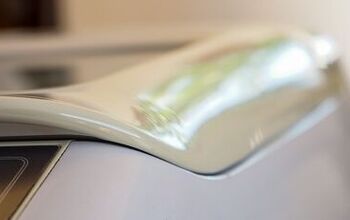How To Stop A Pool Cover From Sagging

Many homeowners don’t think much about their pool covers when they close their pools for the season. However, you may understandably feel concerned if you see your pool cover sagging low, and wonder how to stop it from sagging.
The best way to stop a pool cover from sagging is to remove debris, like fallen leaves and sticks. This lets water drain through the pool cover instead of pooling on the surface. You may have to drain the extra water on the cover with a garden hose or submersible pump to stop the cover from sinking.
Replace your pool cover if it’s over 10 years old and continually sags no matter what you do. Follow along as we explore how to keep your pool cover from sinking and sagging.
How To Keep Your Pool Cover From Sagging
The best way to keep your pool cover from sagging, depends on the cause of the problem. Luckily, stopping a pool cover from sagging only takes a few steps.
1. Keep It Clean
You’re not alone if your pool cover gets dirty throughout the fall and winter. Leaves, sticks, branches, and other yard debris will likely land on your pool cover. Not only does this look bad, but it can also cause your pool cover to sag.
The weight of the debris can take a toll on your pool cover, especially if you leave it alone. Excessive rain worsens the problem, as rainwater struggles to get past the debris. This means it will take longer for the rain to drain through the pool cover as the debris blocks the path.
Slow drainage paired with the weight of the debris and fallen leaves can explain why your pool cover sags. You can avoid this problem by cleaning your pool cover at least once weekly. Use a leaf blower to remove hard-to-reach debris and carefully remove the rest with a rake or skimmer.
2. Adjust The Water Level
Some homeowners mistakenly believe the water level in a pool doesn’t matter when it’s closed for the season. However, water level affects everything from the skimmer and plumbing to the condition of your pool cover. The lower the water level, the more likely your pool cover will sag and even break.
Too much water can also damage your pool cover, as it can rise and seep through the cover. You can help stop a pool cover from sagging if you keep the water level at least a few inches below the skimmer. Keep in mind that you may need to drain your swimming pool again if it rains and snows a lot during the winter.
You can get away with a higher water level if you have a solid cover compared to a mesh cover. However, most people can benefit from having the waterline sit 6” below the skimmer. That way, your pool cover won’t likely sag, and you don’t have to worry too much about rain and snow unless extreme weather occurs.
3. Pull The Cover Tight
How well you install your pool cover has a lot to do with whether or not it will sag. The key is to make sure your pool cover is taut and even, or else it may easily sag. For example, some people fail to attach each part of the cover to an anchor.
It may look fine at first, but the unanchored side can easily sag due to debris and rain. Not only, that but leaving some of the straps unattached is also dangerous. Doing so can create a gap that makes it easier for small animals to crawl beneath your cover and wind up in the pool.
Many people hire a pool service to close their pool because doing so typically ensures a great job. However, you must be careful and evenly anchor each strap on your pool cover if you forego professional help.
4. Replace Your Cover
Like anything else, a pool cover only lasts so long before you must replace it. How long your pool cover lasts depends on the material it’s made of and how well you take care of it. The average pool cover only lasts 5-10 years before you must replace it.
However, some pool covers wear out sooner if you live in an area with extreme weather. For example, climates with hot summers and cold winters with lots of snow can take a toll on a pool cover. How well you fold and store your pool cover can even affect how long it lasts.
UV radiation can also eventually damage your pool cover, so you must store it out of the sunlight during the fall and winter. It’s worth upgrading to a mesh pool cover, as they can last up to 15 years with proper care. You can expect to spend between $850 and $3,500 to replace your cover, depending on the material and the size of your pool.
5. Drain The Water
Do you have a submersible pump? If so, you can easily keep your pool cover from sinking due to excess rainwater and melted snow. Place your submersible pump on the pool and drain the water until the level is low enough that it won’t sag.
Be careful and make sure the pump doesn’t make the cover sag further. Depending on how badly it sags, the weight of the pump may be the straw that breaks the camel’s back. You can also drain the water on your pool cover with a simple garden hose.
Siphon the water off the pool cover using a hose until it doesn’t sag anymore. Otherwise, you can carefully remove the pool cover and let the water fall into the pool. In that case, you may have to drain some pool water if it is too close to the skimmer.
6. Patch Leaks
Pool covers can suffer wear and tear throughout their lifespans. This can cause leaks that let water seep into your pool and make the cover sag. Today, finding pool cover patch kits is easier than ever, and they’re not difficult to use.
However, you must make sure the patch kit is made of the same material as your pool cover. This can ensure a perfect fit and stop your pool cover from sagging. Even still, it’s worth replacing your pool cover if it has holes and tears.
Summing It Up
Remove the leaves and debris from your pool cover if it keeps sagging and sinking. Use a submersible pump or garden hose to remove excess water on the cover so it won’t sag. Make sure the pool cover is pulled taut and connected to each of the anchors, or else it won’t stay even and may sag.
Related Guides:

Nick Durante is a professional writer with a primary focus on home improvement. When he is not writing about home improvement or taking on projects around the house, he likes to read and create art. He is always looking towards the newest trends in home improvement.
More by Nick Durante











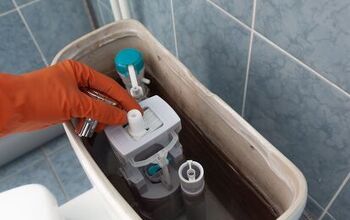
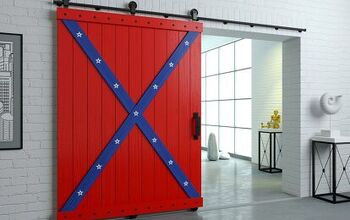

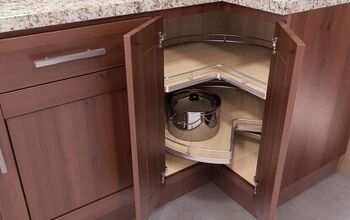
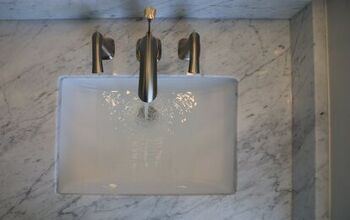
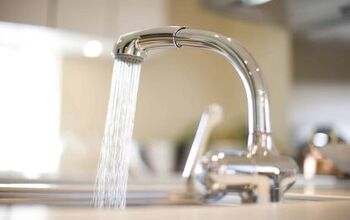

![12 Washing Machine Brands to Avoid [with Recall Data]](https://cdn-fastly.upgradedhome.com/media/2023/07/31/9075781/12-washing-machine-brands-to-avoid-with-recall-data.jpg?size=350x220)






